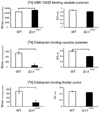Critical role of the embryonic mid-hindbrain organizer in the behavioral response to amphetamine and methylphenidate
- PMID: 19635527
- PMCID: PMC2783636
- DOI: 10.1016/j.neuroscience.2009.07.040
Critical role of the embryonic mid-hindbrain organizer in the behavioral response to amphetamine and methylphenidate
Abstract
The embryonic mid-hindbrain organizer, which is composed of a transient cell population in the brainstem, controls the development of dopaminergic and serotonergic neurons. Different genes determining the position and activity of this embryonic structure have been implicated in dopamine- and serotonin-associated disorders. Mouse mutants with a caudally shifted mid-hindbrain organizer, are hyperactive, show increased numbers of dopaminergic neurons and a reduction in serotonergic cells. In the present study we used these mutants to gain insights into the genetic and developmental mechanisms underlying motor activity and the response to psychostimulants. To this end, we studied the motor activity of these animals after exposure to methylphenidate and amphetamine and characterized their dopaminergic and serotonergic innervation. Saline-treated mutants showed increased locomotion, more stereotypic behavior and a decrease in rearing compared to wild-type mice. This baseline level of activity was similar to behaviors observed in wild-type animals treated with high doses of psychostimulants. In mutants methylphenidate (5 or 30 mg/kg) or amphetamine (2 or 4 mg/kg) did not further increase activity or even caused a decrease of locomotor activity, in contrast to wild-type mice. Fluoxetine (5 or 10 mg/kg) reduced hyperactivity of mutants to levels observed in wild-types. Transmitter measurements, dopamine and serotonin transporter binding assays and autoradiography, indicated a subtle increase in striatal dopaminergic innervation and a marked general decrease of serotonergic innervation in mutants. Taken together, our data suggest that mice with an aberrantly positioned mid-hindbrain organizer show altered sensitivity to psychostimulants and that an increase of serotonergic neurotransmission reverses their hyperactivity. We conclude that the mid-hindbrain organizer, by orchestrating the formation of dopaminergic and serotonergic neurons, is an essential developmental parameter of locomotor activity and psychostimulant response.
Figures





Similar articles
-
Paradoxical striatal cellular signaling responses to psychostimulants in hyperactive mice.J Biol Chem. 2006 Oct 27;281(43):32072-80. doi: 10.1074/jbc.M606062200. Epub 2006 Sep 5. J Biol Chem. 2006. PMID: 16954211
-
Location and size of dopaminergic and serotonergic cell populations are controlled by the position of the midbrain-hindbrain organizer.J Neurosci. 2003 May 15;23(10):4199-207. doi: 10.1523/JNEUROSCI.23-10-04199.2003. J Neurosci. 2003. PMID: 12764108 Free PMC article.
-
Differential psychostimulant-induced activation of neural circuits in dopamine transporter knockout and wild type mice.Neuroscience. 2003;118(2):297-310. doi: 10.1016/s0306-4522(03)00165-9. Neuroscience. 2003. PMID: 12699766
-
The pharmacology of amphetamine and methylphenidate: Relevance to the neurobiology of attention-deficit/hyperactivity disorder and other psychiatric comorbidities.Neurosci Biobehav Rev. 2018 Apr;87:255-270. doi: 10.1016/j.neubiorev.2018.02.001. Epub 2018 Feb 8. Neurosci Biobehav Rev. 2018. PMID: 29428394 Free PMC article. Review.
-
Psychostimulants affect dopamine transmission through both dopamine transporter-dependent and independent mechanisms.Eur J Pharmacol. 2015 Oct 5;764:562-570. doi: 10.1016/j.ejphar.2015.07.044. Epub 2015 Jul 21. Eur J Pharmacol. 2015. PMID: 26209364 Free PMC article. Review.
Cited by
-
Unusual effects of nicotine as a psychostimulant on ambulatory activity in mice.ISRN Pharmacol. 2012;2012:170981. doi: 10.5402/2012/170981. Epub 2012 Mar 20. ISRN Pharmacol. 2012. PMID: 22530136 Free PMC article.
-
Abnormal development of monoaminergic neurons is implicated in mood fluctuations and bipolar disorder.Neuropsychopharmacology. 2015 Mar;40(4):839-48. doi: 10.1038/npp.2014.244. Epub 2014 Sep 22. Neuropsychopharmacology. 2015. PMID: 25241801 Free PMC article.
References
-
- Anderson CM, Polcari A, Lowen SB, Renshaw PF, Teicher MH. Effects of methylphenidate on functional magnetic resonance relaxometry of the cerebellar vermis in boys with ADHD. Am J Psychiatry. 2002;159:1322–1328. - PubMed
-
- Björklund A, Lindvall O. Handbook of Chemical Neuroanatomy, Vol. 2, Classical Transmitter in the CNS, Part I. Amsterdam: Elsevier; 1984. dopamine containing systems in the CNS.
-
- Borgkvist A, Puelles E, Carta M, Acampora D, Ang SL, Wurst W, Goiny M, Fisone G, Simeone A, Usiello A. Altered dopaminergic innervation and amphetamine response in adult Otx2 conditional mutant mice. Mol Cell Neurosci. 2006;31:293–302. - PubMed
-
- Broccoli V, Boncinelli E, Wurst W. The caudal limit of Otx2 expression positions the isthmic organizer. Nature. 1999;401:164–168. - PubMed
Publication types
MeSH terms
Substances
Grants and funding
LinkOut - more resources
Full Text Sources
Other Literature Sources
Molecular Biology Databases

